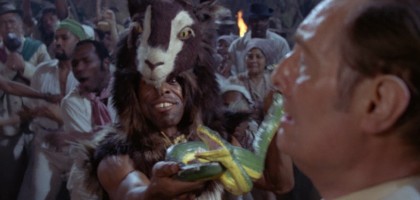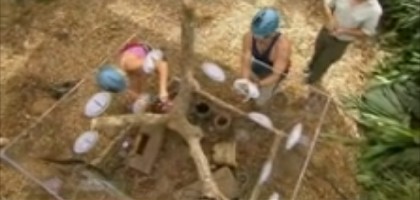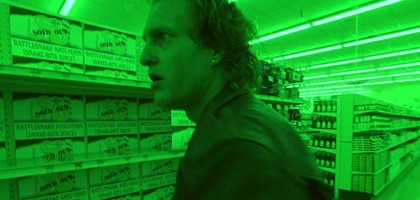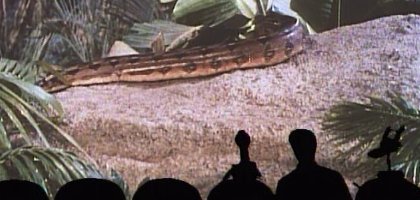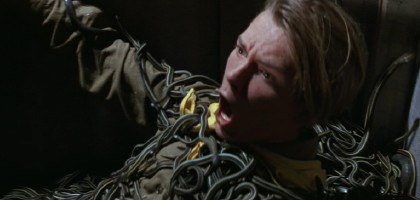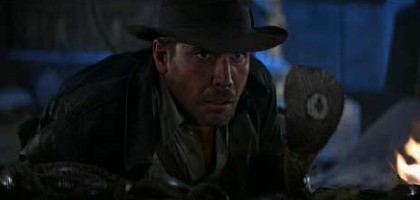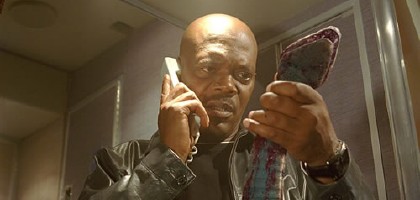Snakes on a Train
- Year: 2006
- Format: Movie
- Buy It at Amazon.com
- View the IMDb Listing
- Categories: Animation and Animatronics, Biological Impossibilities, Help! It’s Harmless!, Snakesploitation Movies
- Posted on October 24, 2010
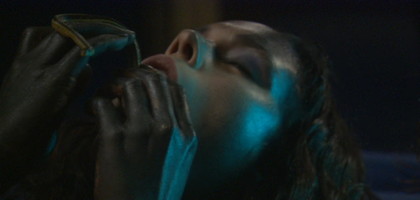
A low-budget direct-to-DVD mockbuster released to cash in on the hype surrounding Snakes on a Plane, this movie actually came out three days before Snakes on a Plane was released. It’s quite possibly the worst movie I’ve ever seen (and I’ve seen more than one Ed Wood movie, so that’s saying something). Not only is it tedious and boring, its dialogue painful and its characters disposable, the nudity takes a full hour to make an appearance, which in this genre is inexcusable.
Here’s the premise: a cursed woman hides aboard a train in an attempt to get to Los Angeles to have the curse lifted; the curse makes her literally vomit deadly snakes. And if that already puts strain on your willingness to suspend disbelief, wait for it. No deadly snakes actually make an appearance in this movie. Up until the last 10 minutes or so, when Burmese Pythons and Boa Constrictors make an appearance shortly before the final bad-CGI giant snake swallows the whole train — spoilers, because I don’t actually want you to see the film — the snakes we’re expected to believe are deadly are played by Common Garter Snakes (including some juveniles) and Ball Pythons. Which, of course, being garter snakes and pythons, don’t do very much on-screen. Not only that, in some scenes, an actual plastic snake toy is included among the garter snakes!
It’s beyond ridiculous. It’s hardly worth mentioning that snakes don’t eat bread, or that putting a garter snake in your mouth isn’t a very idea (their musk is pretty rank). Because the basic problem of the movie is that it takes until the very end for everyone to figure out how to deal with snakes on a train: 1. Stop the train. 2. Get off the train. Problem solved!
